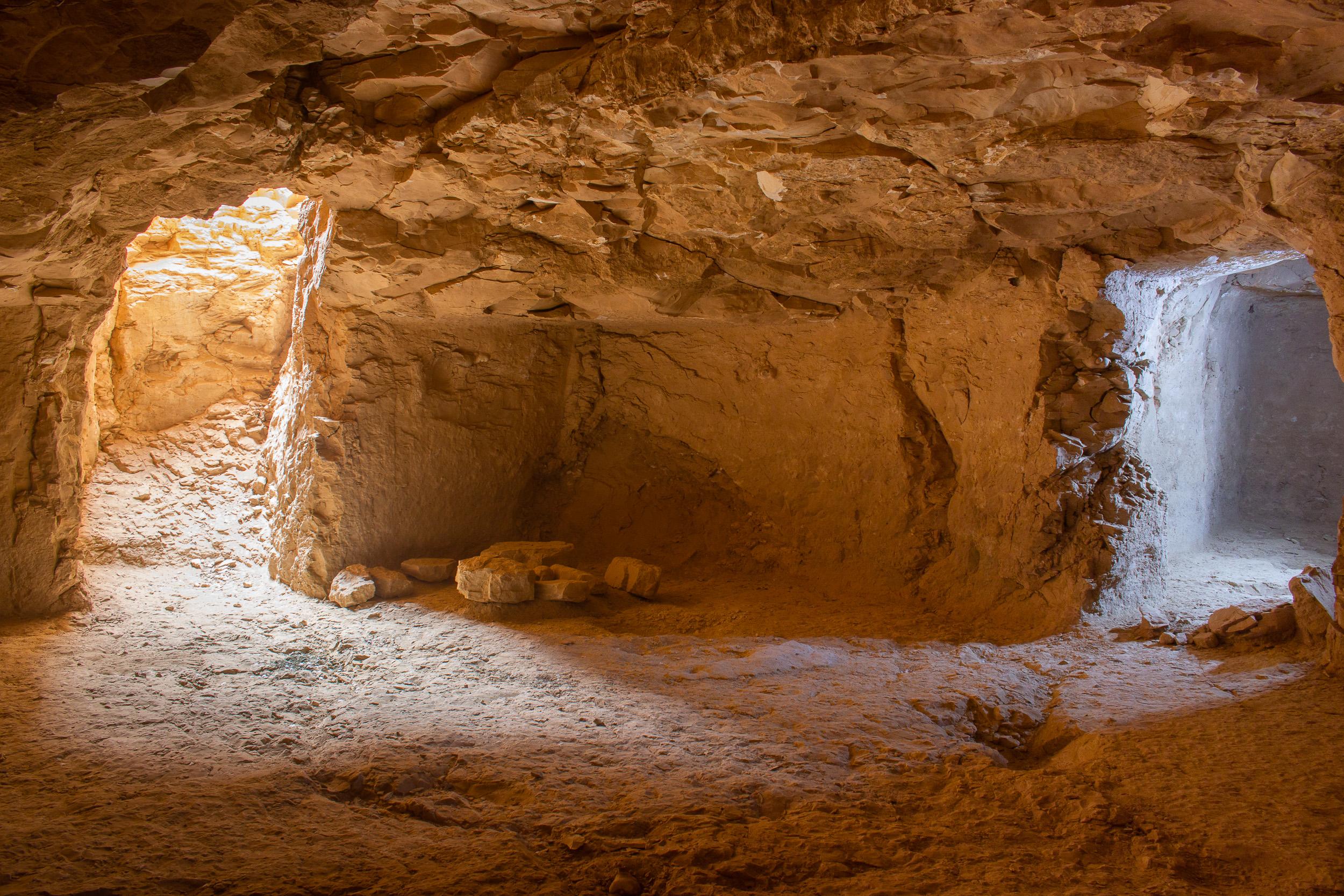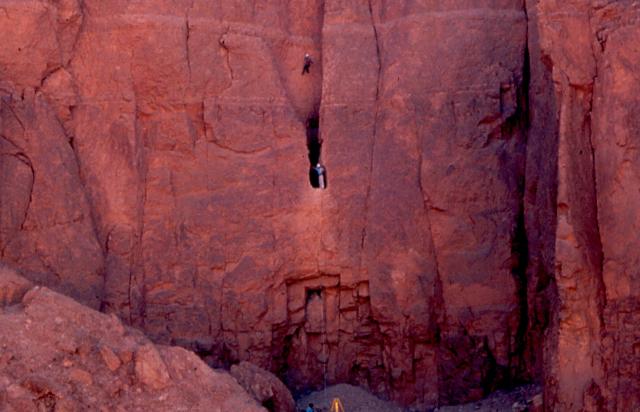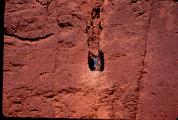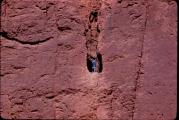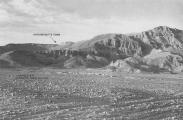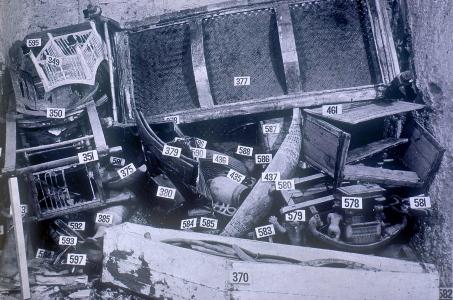Wadi A-1
Queen Hatshepsut
Entryway A
See entire tombA stepped entryway hidden in a waterworn cleft of the cliff leads down to the tomb. Slots for wooden beams were installed by Émile Baraize on either side of the Steps, presumably for the extraction of Hatshepsut's Sarcophagus. The original steps of the entryway are eroded.
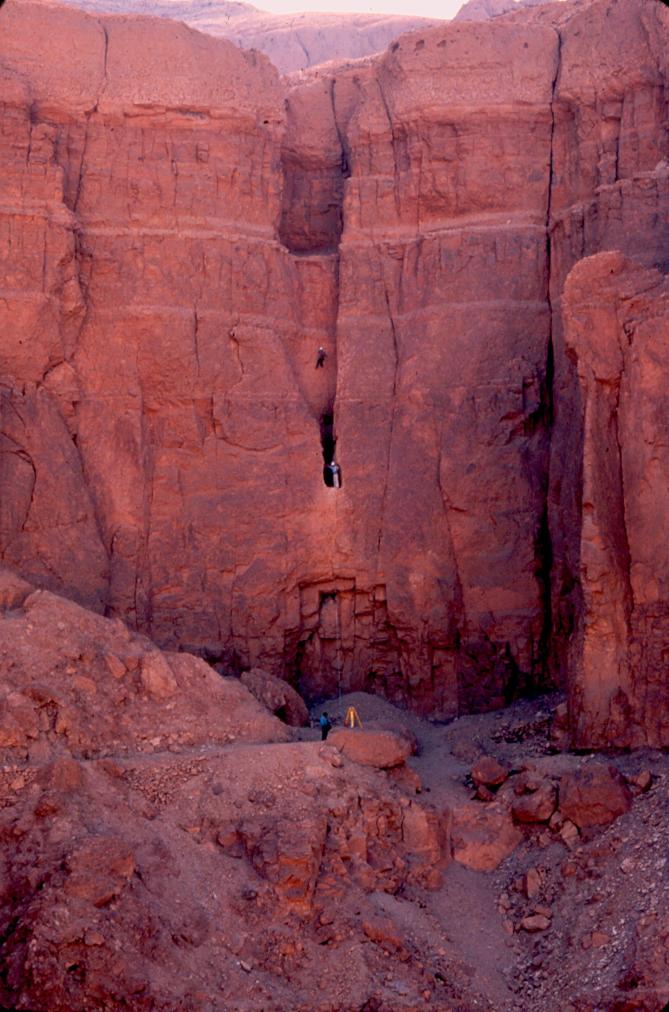
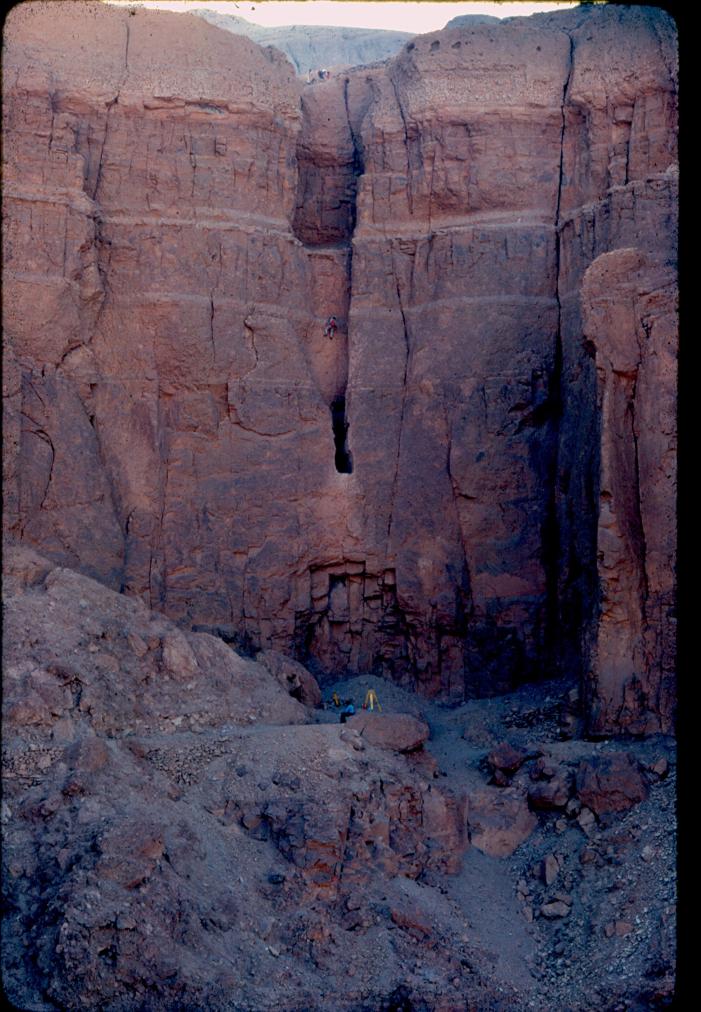
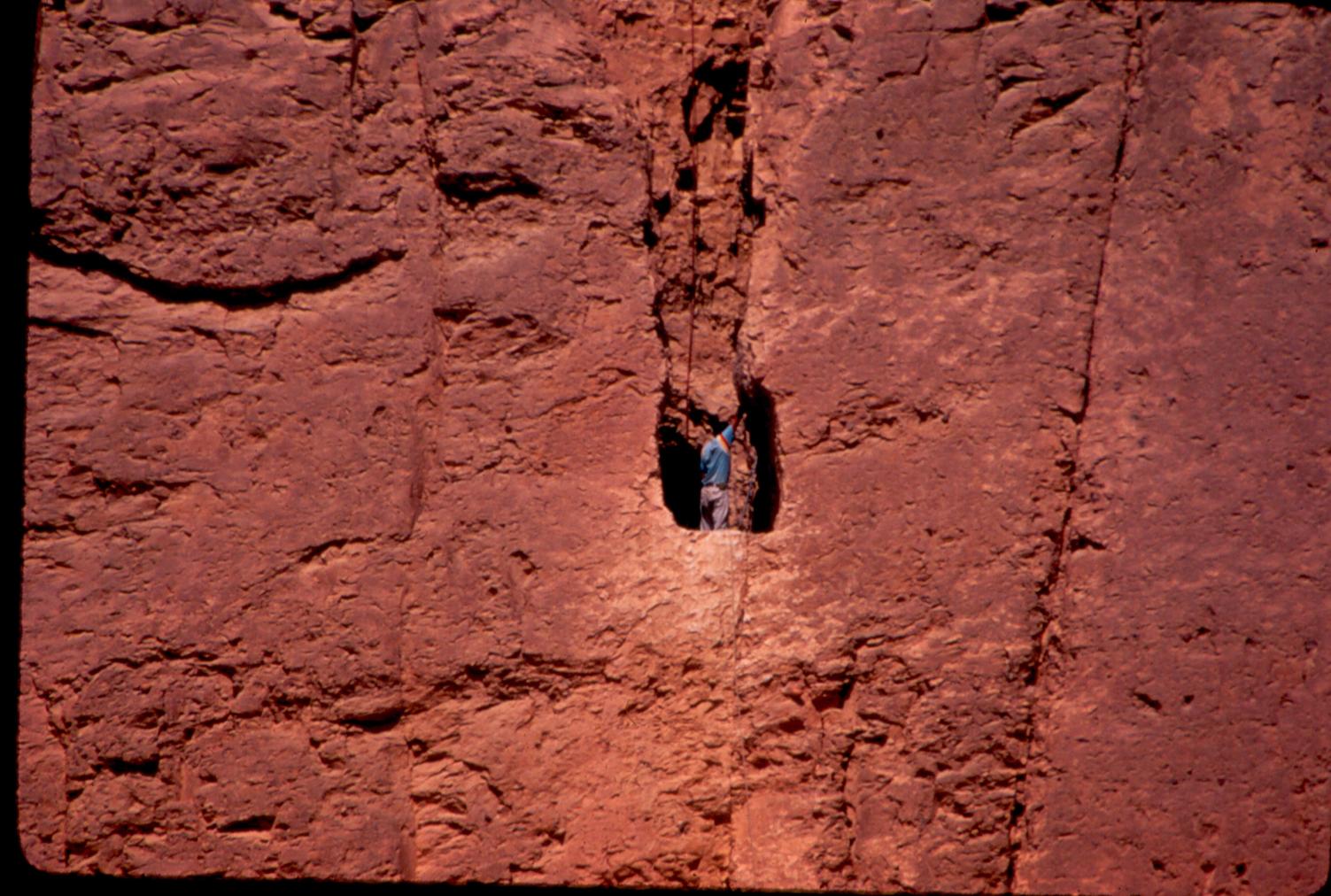
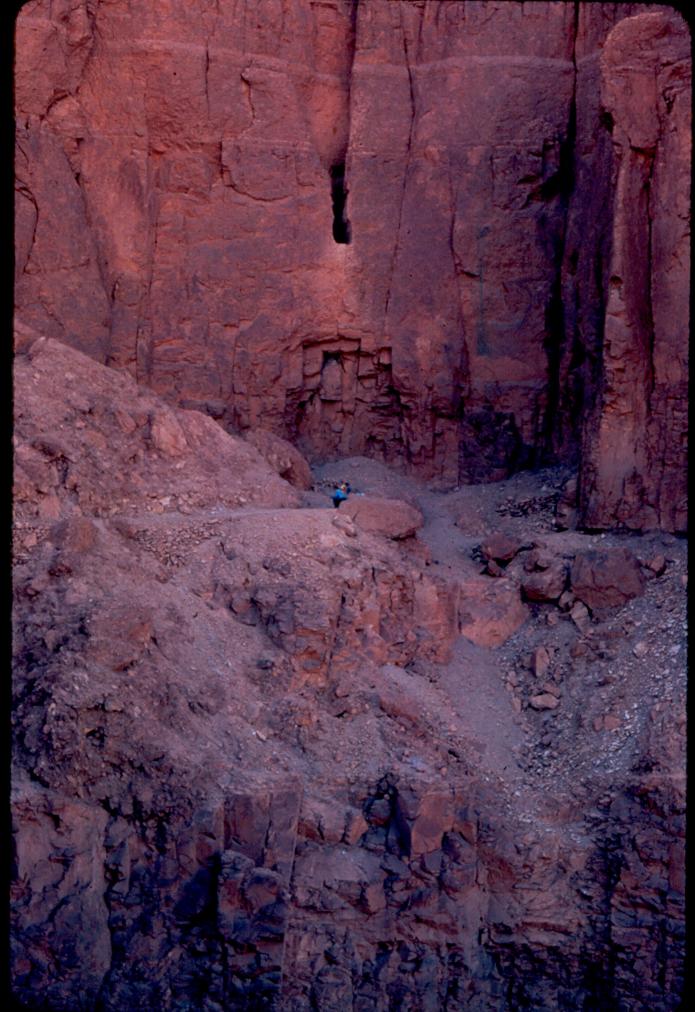
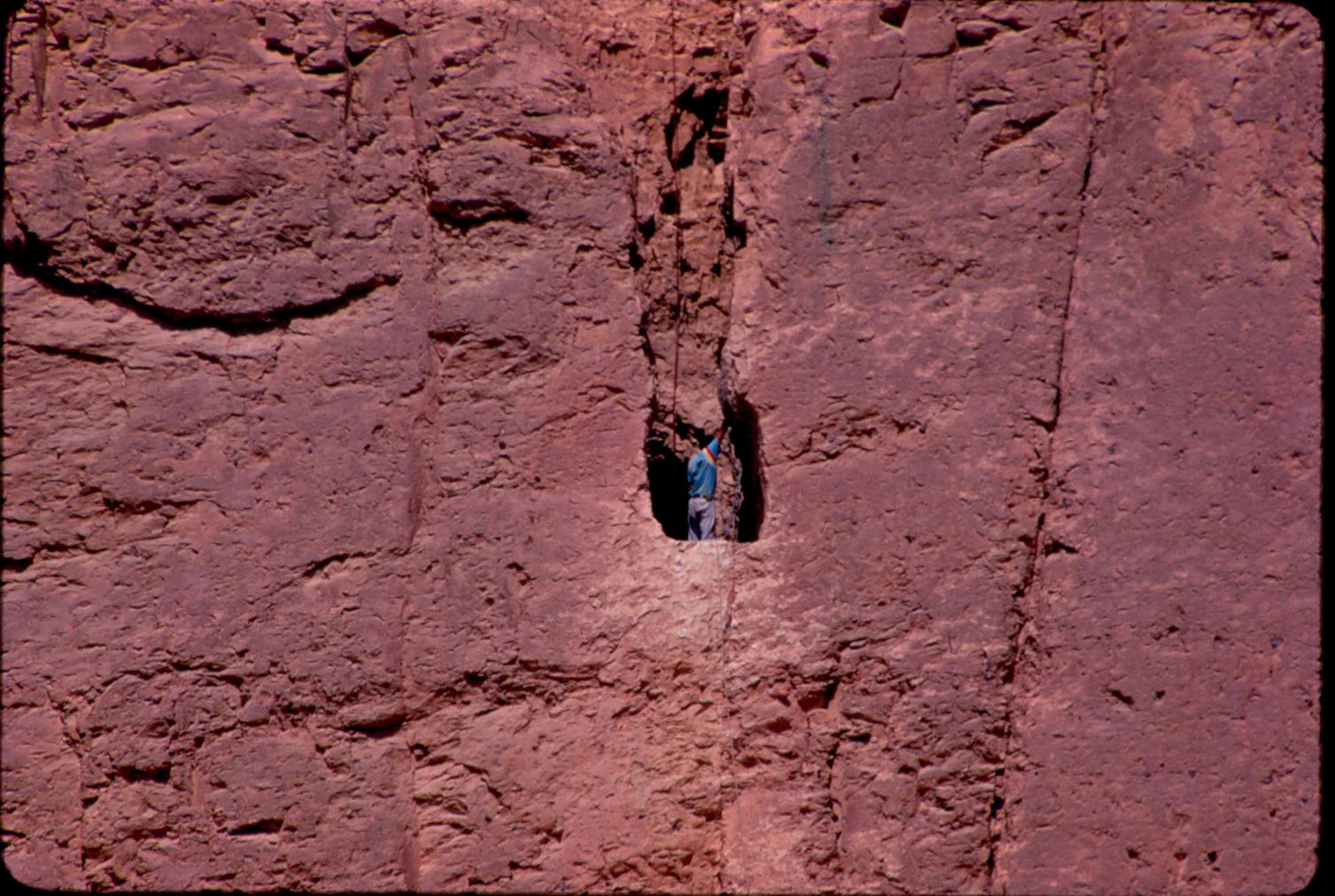
Corridor B
See entire tombA long sloping corridor lies on axis with the tombs entrance. The walls and ceiling were not plastered or decorated and parts of the ceiling have collapsed with large boulders lying in the corridor. The front part of the corridor and a further socket at the end of the corridor on the northern wall seem to have been cut by Émile Baraize in order to remove Hatshepsut's Sarcophagus.
Chamber C
See entire tombThis chamber lies perpendicular to the tomb's axis and is undecorated. A part of the floor of the northern side this chamber has collapsed.
Corridor D
See entire tombThis second corridor lies perpendicular to the tomb's axis and the floor descends slightly. It was not plastered or decorated and a section of the floor on the southeastern side has collapsed.
Chamber E
See entire tombThis chamber lies on axis with the preceding corridor and is undecorated. A pit was cut into the floor on the southeastern side and leads down to the burial chamber. Large sections of the floor on the northern and southeastern side have collapsed. Large blocking stones were noted here by Howard Carter and Émile Baraize, but their current location is unknown. A depression was also cut into the floor on the northwestern side, possibly by tomb robbers. The Sarcophagus of Queen Hatshepsut was discovered in this chamber by Carter and later removed by Baraize. It is now housed in the Cairo Museum.
Descent F
See entire tombA pit in the floor of chamber E leads down a small, narrow, undecorated descent to the burial chamber. The ceiling of this descent has eroded.
Burial chamber G
See entire tombThis small chamber served as the burial chamber and is undecorated. It was never used as Hatshepsut was interred in the Valley of the Kings. The ceiling of this chamber has eroded and the eastern and southern walls are rough.
About
About
Tomb Wadi A-1 is located high in a cliff face (some 70 m above the valley floor) at the end of a tributary branch of Wadi Jabbanat Al Qurud called Wadi Sikkat Taqat Zayid (Howard Carter’s Wadi A). The tomb is hidden at the base of a water-worn cleft of the cliff and behind a large buttress of rock, so that it is only visible when seen directly from below. The tomb consists of stepped entryway (A) that leads into a long sloping corridor (B), opening into a square chamber (C). From here the axis of the tomb shifts sharply to the south through a short corridor (D) that opens into a large chamber (E). Cut into the floor of chamber on E its southern side, a steep passage (F) leads into a small burial chamber (G). The tomb was never decorated.
When Howard Carter examined the tomb in 1916, a large quartzite Sarcophagus (Cairo Museum, JE 47032) was resting over the mouth of passage F with the lid placed to one side. The texts on the sarcophagus revealed that it was intended for the “the king’s daughter, the king’s sister, wife of the god, the great wife of the king, lady of the two lands, Hatshepsut”. Tomb Wadi A-1 was thus planned for Hatshepsut as Queen, but was abandoned once she ascended the throne.
Noteworthy features:
The tomb was originally intended for Hatshepsut as the great royal wife of Thutmes II. However, it was abandoned once Hatshepsut ascended the throne and she was interred in the Valley of the Kings (KV 20).
Site History
The tomb was first explored and studied by Howard Carter during his 3 month survey of the Western Wadis (1916-1917). Upon discovery of the large quartzite Sarcophagus (Cairo Museum, JE 47032) in Chamber E, he concluded that the tomb was intended for Hatshepsut as great royal wife of Thutmes II, but later abandoned upon her ascension to the throne. According to Christine Lilyquist, the tomb’s plan is consistent with the chronologically close tombs of Wadi C-1, believed to belong to Neferure, and Wadi D-1, belonging to the three foreign wives of Thutmes III (Menhet, Menwi, and Merti). All three tombs turn to the right from the descending corridor. Elizabeth Thomas also noted that the lack of decoration is a typical feature for tombs assigned to queens of the 18th Dynasty.
Dating
This site was used during the following period(s):
Exploration
Conservation
Site Condition
The tomb held no traces that it had ever contained a burial. Apart from two broken necks of pottery jars, which Carter presumed were left behind by workmen, a few limestone slabs of various sizes littered the floor of Chamber E. These may either have been intended as a plinth for the Sarcophagus or to seal the entrance to passage F. According to Christine Lilyquist, the whereabouts of these finds are now unknown.
Due to its distant location and the dangerous nature of its entry, the tomb is not open to public visitation.
Hieroglyphs
Queen Hatshepsut
 The King's daughter, the King's sister, the God's wife, the Great Royal Wife, Lady of the Two Lands, Hatshepsut
sAt-nswt snt-nswt Hmt-nTr Hmt-wrt-nswt nbt-tAwy HAt-Spswt
The King's daughter, the King's sister, the God's wife, the Great Royal Wife, Lady of the Two Lands, Hatshepsut
sAt-nswt snt-nswt Hmt-nTr Hmt-wrt-nswt nbt-tAwy HAt-Spswt

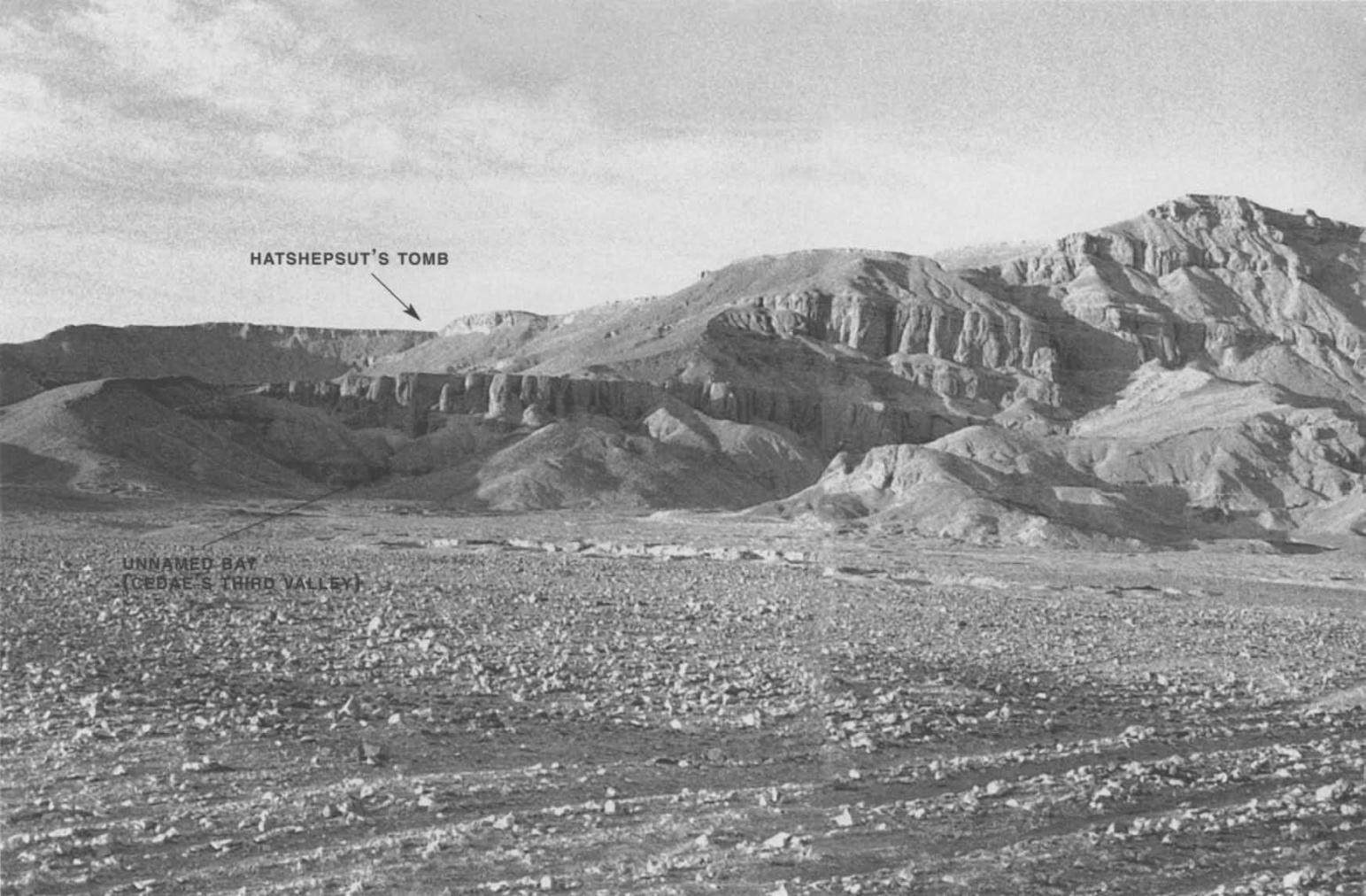

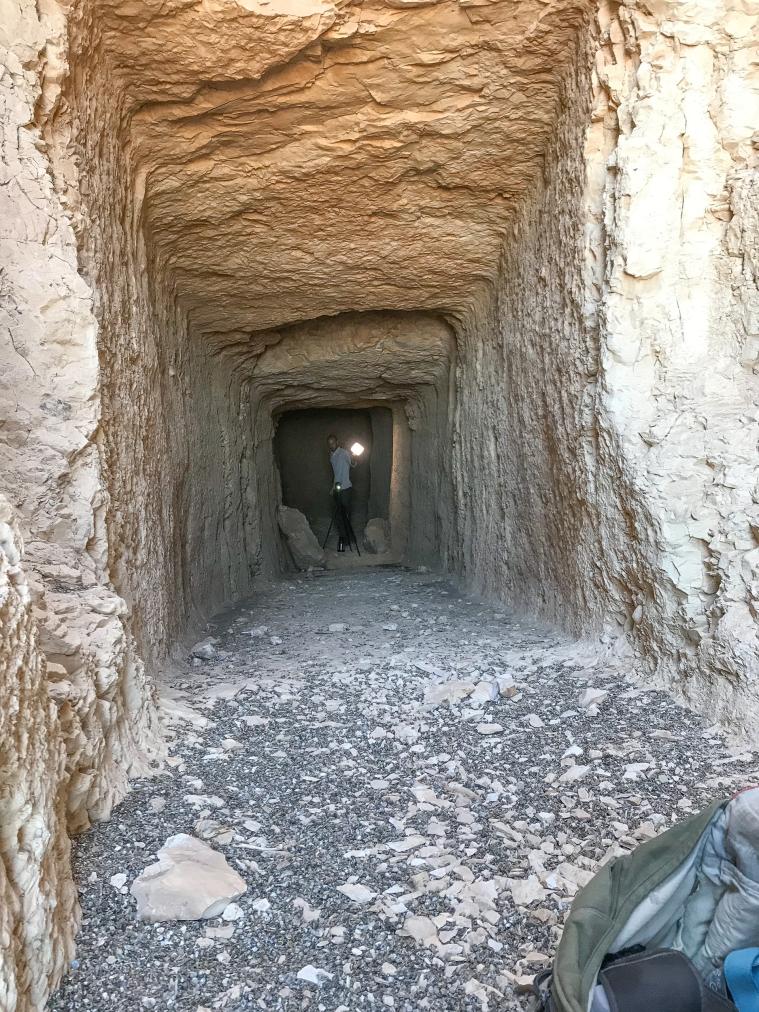





Articles
Funerary Equipment
Bibliography
Thomas, Elizabeth. The Royal Necropoleis of Thebes. Princeton: privately printed, 1966.
Winlock, Herbert E. Notes on the Reburial of Tuthmosis I. Journal of Egyptian Archaeology. London. 15 (1929): 56-68.
